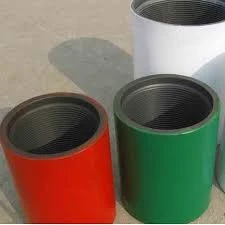Understanding Tubing and Casing in Oil and Gas Well Operations
Understanding Tubing and Casing in Oil and Gas Operations
In the oil and gas industry, the terms tubing and casing are crucial for ensuring the safety and efficiency of drilling operations
. These components play significant roles in the production of hydrocarbons, providing structural integrity to the wellbore and facilitating the extraction process.Casing refers to the series of pipes that are inserted into a drilled well. It serves multiple purposes primarily, it stabilizes the wellbore, preventing collapse due to the surrounding geological formations. Casing is typically made from steel and is coated to resist corrosion. It also helps isolate different pressure zones within the well, preventing fluids from intermingling—an essential factor in maintaining the integrity of the reservoir and the safety of operations.
The installation of casing occurs in stages. Initially, the conductor casing is set to prevent the upper sections of the well from collapsing and to protect groundwater formations. Following this, surface casing, intermediate casing, and production casing are installed depending on the depth and the geological characteristics encountered. Each of these layers is cemented in place to ensure they remain sealed and stable under pressure.
tubing and casing

In contrast, tubing is the pipe through which oil and gas are produced from the reservoir. Once a well is completed and prepared for production, tubing is placed inside the production casing, allowing for the efficient transfer of hydrocarbons to the surface. Unlike casing, tubing is typically less rigid and can accommodate thermal expansion and pressure changes within the well. It is also usually smaller in diameter than casing, which allows for easy handling and installation.
One critical distinction between tubing and casing is that tubing is removable, allowing for maintenance or replacement without the need to abandon the entire well. This aspect is essential when it comes to optimizing production as reservoir conditions change or when equipment malfunctions.
In summary, tubing and casing are integral components of oil and gas production. Casing ensures the structural integrity and safety of the well, while tubing facilitates the efficient flow of hydrocarbons to the surface. Understanding the functions and differences of these two elements is crucial for engineers and operators alike, as they navigate the complex environment of hydrocarbon extraction. This knowledge not only enhances operational efficiency but also contributes to environmental safety and regulatory compliance within the industry.
-
Tubing Crossover - API Compatible, Custom Sizes, In StockNewsNov.10,2025
-
Tubing Coupling | High-Strength, Leak-Proof Steel CouplingsNewsNov.10,2025
-
Wholesale API Threading Casing Coupling | API 5CT, Fast ShipNewsNov.10,2025
-
Pup Joint Supplier | API Certified, Custom, Quick ShipNewsNov.10,2025
-
Pup Joint Manufacturers | Precision Machined, Fast DeliveryNewsNov.10,2025
-
Tubing Coupling | Precision Steel, Leak-Proof, Fast DeliveryNewsNov.03,2025







